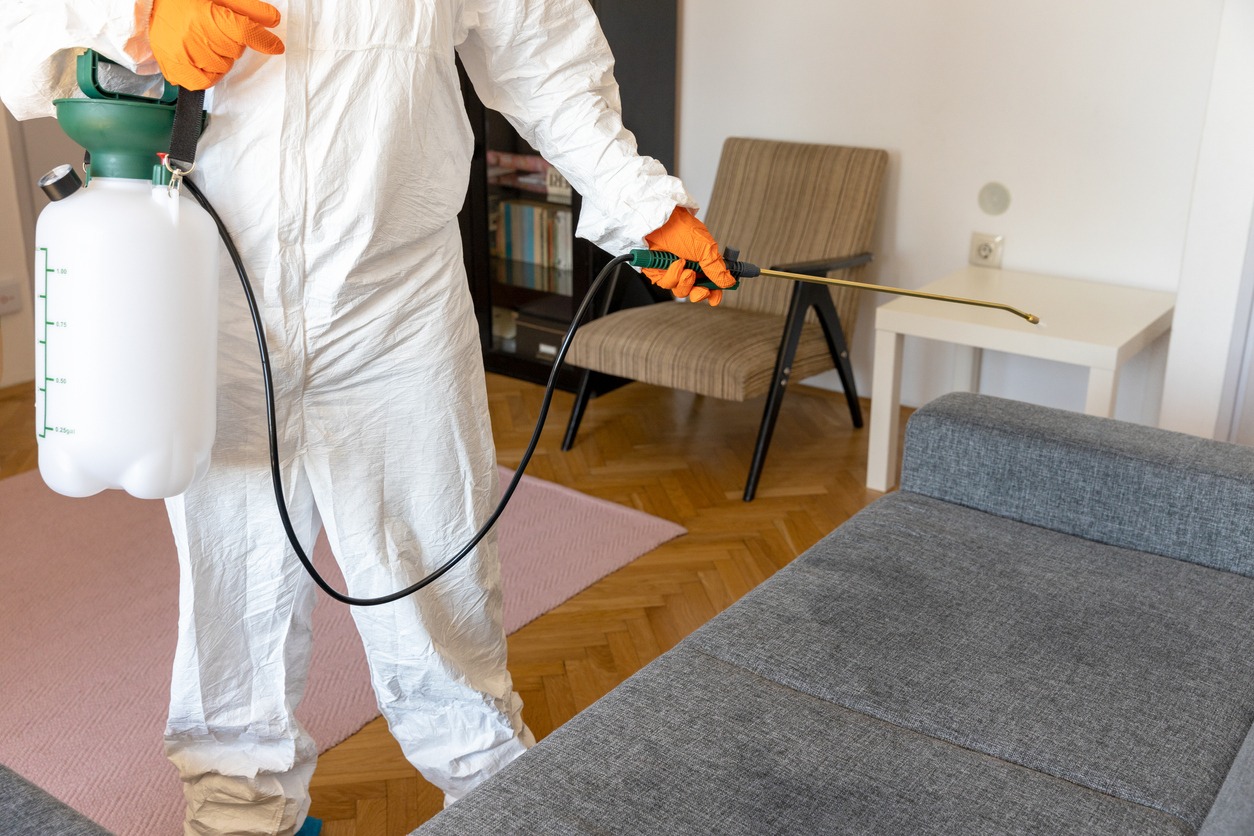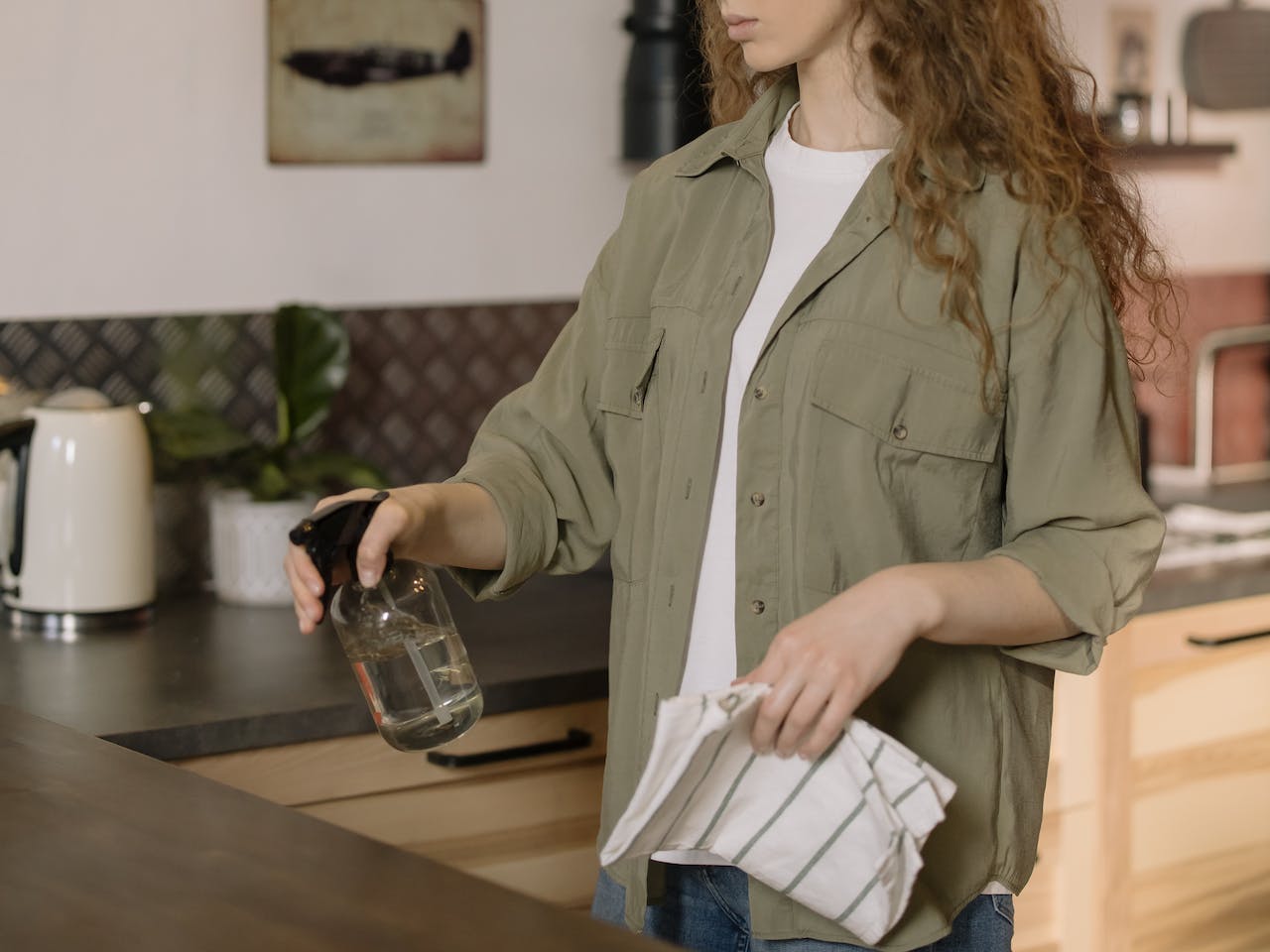Dealing with household pests goes beyond mere inconvenience; it’s a matter of health and safety for you and your loved ones. These unwelcome guests, ranging from stealthy ants to resilient roaches, evoke disgust and pose significant risks by carrying diseases and potentially harming humans and pets through bites or contamination. The presence of pests, be it through direct sightings of the creatures themselves or evidence of their existence like droppings or damage, is a clear call to action. While the initial instinct might be to tackle the problem on your own, the expertise of a professional exterminator can be invaluable. They possess the knowledge, tools, and techniques to effectively eradicate these pests, ensuring your home returns to being a safe and comfortable sanctuary.
1. Identify the Pests
Correctly identifying the type of pest infesting your home is crucial in effectively addressing the problem. Each pest comes with its own set of behaviors, preferences for habitat, and potential risks, which means that the strategies for eviction will vary significantly from one type to another.
Signs that indicate the presence of pests include visible droppings, physical damage to property, the discovery of nests, or sightings of the pests themselves. Paying attention to these signs can help in the early identification and subsequent management of pest issues, making your living environment safer and more comfortable.
2. Eliminate Food and Water Sources
Eliminating food and water sources prevents pests from invading your home. From insects to rodents, pests often look for easy access to food and water, which your living space can unwittingly provide. By storing food in sealed containers, fixing any leaks that offer water, and ensuring garbage is regularly taken out, you significantly reduce the appeal of your home to these unwanted guests.
Keeping your home, especially areas like the kitchen and dining room, clean and free of food debris further discourages pests from settling in. This approach helps prevent infestations and contributes to the overall hygiene and comfort of your living environment, making it less hospitable to pests.
3. Seal Entry Points
Sealing entry points is a critical preventative measure in pest control, acting as a physical barrier to stop pests from entering your home. Over time, buildings can develop small cracks, holes, or gaps in the walls, floors, and foundations, serving as gateways for pests seeking shelter or food.
By conducting thorough inspections of your home and using caulk or other suitable materials to seal these openings, you effectively minimize the risk of infestation. It’s essential to scrutinize areas around utilities and pipes, as these are common entry routes for pests due to the holes drilled for their installation.
Implementing this step not only helps prevent the entry of new pests but also contributes to your home’s overall energy efficiency and structural integrity, offering multiple benefits beyond pest control.
4. Use Appropriate Pest Control Methods
Choosing the proper pest control methods is essential for effectively managing and eliminating pests from your home. The type of pest you’re dealing with dictates the specific strategy you should employ.
It’s crucial to adhere to the manufacturer’s instructions when using these products to ensure their efficacy and minimize risks, especially in homes with pets and children. Correctly applying and choosing pest control measures can lead to a safer, pest-free living environment.
5. Maintain Your Yard
Maintaining your yard is a proactive step in reducing the likelihood of pest infestations in your home. Overgrown grass, untrimmed bushes, and the accumulation of debris provide ideal hiding spots and breeding grounds for various pests, including rodents, insects, and spiders.
If left unchecked, these outdoor areas can quickly become the source of indoor pest problems as pests migrate from the yard into your home in search of food and shelter. By keeping the grass cut short, bushes and trees trimmed away from the house, and eliminating standing water where mosquitoes can breed, you not only enhance the aesthetic appeal of your property but also significantly decrease the potential for pests to establish a foothold.
Regular yard maintenance, including removing leaf litter, fallen branches, and other debris, further minimizes the available habitats for pests, creating a less inviting environment for them and helping to keep your home pest-free.
6. Consider Professional Help
When faced with a severe pest infestation or do-it-yourself (DIY) pest control methods fall short, seeking professional help becomes a necessary and practical course of action. Professional pest control services are equipped with advanced tools, pesticides, and methodologies that are not readily available to the general public. These professionals possess the expertise to accurately identify the type of pests, understand their behavior, and determine the most effective treatment plan. Their experience allows them to tackle infestations thoroughly, often offering more permanent solutions that are less likely to result in recurrence.
By leveraging their specialized knowledge and resources, professional exterminators can ensure that your pest problem is addressed safely and efficiently, providing peace of mind and protecting your home from further damage or health risks associated with pests.
7. Regular Monitoring and Maintenance
Continual vigilance through regular monitoring and maintenance is vital in preventing a resurgence of pests after an initial eviction. Even after a successful pest control intervention, it’s crucial to remain alert for any signs indicating pests are attempting to come back. This includes looking out for new droppings, damage, or actual sightings of pests.
Implementing a thorough cleaning routine, reducing clutter, and conducting detailed home inspections can significantly deter pests from returning. Areas that were previously infested should be given special attention to catch any early indications of pest activity.
Additionally, considering a partnership with a pest control professional for periodic inspections can provide an added layer of security. These experts can spot potential problems that may be obscure to homeowners and offer preventative treatments to ensure your home remains pest-free. This proactive approach to pest management helps to safeguard your living environment against future infestations, maintaining the health and comfort of your home.
Different Types of Pests and How to Evict Them
- Ants: Ants will happily make themselves home in your space. Because ants have a symbiotic attachment to aphids, it’s a good idea to get the exterior of your home checked out, as well as a treat for ants indoors. Keep surfaces clean and free of food residues. Use ant baits and seal entry points. Cinnamon, vinegar, or commercial ant repellents can also deter ants.
- Cockroaches: Use roach baits, traps, and insecticide sprays. Seal cracks and crevices. Keep your home dry and clean, especially the kitchen.
- Rodents (Mice and Rats): Seal entry points with steel wool or caulk. Use traps baited with food. Consider electronic repellents and, for severe infestations, professional extermination.
- Bedbugs: Wash bedding and clothes in hot water and dry on high heat. Vacuum regularly. Use bedbug-proof mattress encasements. Chemical treatments may require a professional.
- Termites: Reduce moisture in and around your home. Remove wood debris near your house. Use termite baits and barriers. Professional termite control is often necessary.
- Mosquitoes: Eliminate standing water sources. Use window screens and mosquito nets. Apply insect repellent and consider outdoor insecticides for yards.
- Spiders: Keep areas clutter-free. Seal cracks and crevices. Use essential oils like peppermint or commercial spider repellents. Remove visible spiders and webs with a vacuum.
- Fleas: Treat pets with veterinarian-approved flea treatments. Vacuum frequently. Wash pet bedding in hot water. Use flea sprays for your home if necessary.
- Wasps: Look for their nests if you notice wasps around a specific portion of your home. You may find a gray or brown muddy clump stuck to the inside wall of a garage or shed. This is a wasp’s nest and should be treated with great care. The warmer the temperature, the more active wasps are. If you cannot move quickly or don’t want to tackle this project alone, contact a reputable pest control company like Joshua’s Pest Control (http://www.joshuaspestcontrol.com/) to get rid of the wasps safely and effectively.
Conclusion
Making an inviting and comfortable home for your family means being vigilant about pests. Some are just a bother, but others can be dangerous. Taking proactive steps and considering professional assistance when necessary, can protect your home and family from the dangers and discomforts pests bring. Remember, the key to effective pest control is not just to react to infestations but to prevent them from happening in the first place.


